Annapurna Circuit Trekking 12 Days
Have you ever imagined enjoying the grandeur of the Annapurna Circuit for 12 days? From the rugged terrain to the serene landscapes, this trek offers a blend of adventure and tranquility that beckons to be explored.
As you traverse through this iconic route, each step presents a new discovery waiting to unfold. The allure of this journey lies not only in its physical challenges but also in the cultural encounters that enrich the experience.
Join the discussion to uncover the secrets of this remarkable trek and find out how it can captivate your senses in ways you never thought possible.
Key Points
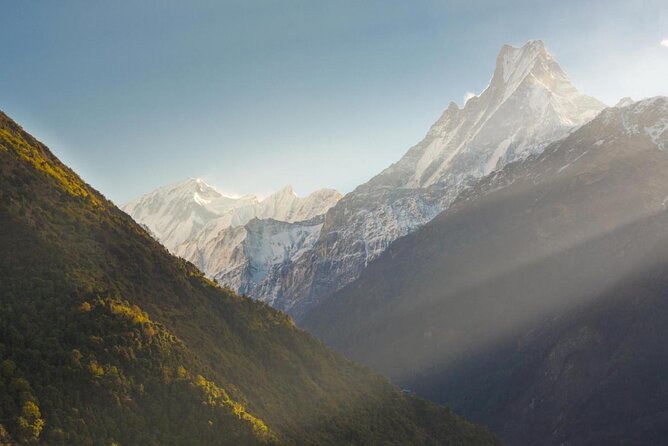
- Immersion in diverse landscapes and cultural experiences
- Engage with local communities for a deeper connection
- Prioritize safety, environmental conservation, and sustainability
- Create lasting memories and personal growth in the Himalayas
Trekking Route Overview
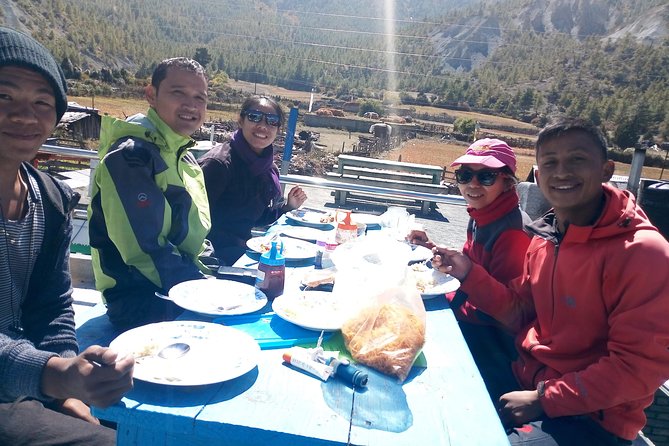
Set out on an exhilarating journey through the majestic Annapurna Circuit, a renowned trekking route offering breathtaking views and diverse landscapes.
The trail difficulty assessment varies from moderate to challenging, with steep inclines and descents that require a good level of fitness.
Weather conditions can change rapidly, so trekkers should be prepared for both sunny days and sudden rain or snowfall.
Along the way, hikers will encounter a rich variety of local flora, including rhododendrons, pine forests, and alpine meadows.
Keep an eye out for diverse fauna sightings like Himalayan Thars, snow leopards, and various bird species.
The Annapurna Circuit truly offers a complete immersion in the natural beauty and wildlife of the Himalayas.
Best Time to Visit
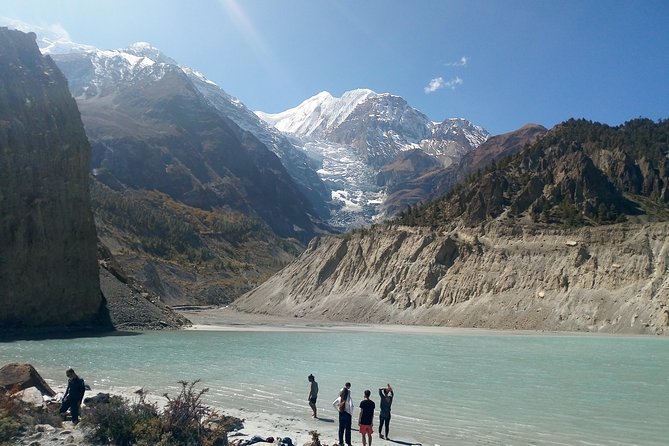
For those planning a trek along the Annapurna Circuit, understanding the best time to visit is crucial for a safe and enjoyable experience. The best time to trek the Annapurna Circuit is during the spring (March to May) and autumn (September to November) seasons when the weather is most favorable.
Here are some key points to consider:
-
Best Gear: Pack appropriate gear for the season, including warm clothing layers, sturdy hiking boots, a good quality backpack, and a reliable sleeping bag.
-
Weather Conditions: Expect clear skies, moderate temperatures, and blooming rhododendrons in spring; while autumn offers stable weather, clear mountain views, and comfortable temperatures.
-
Avoid Monsoon: The monsoon season (June to August) brings heavy rainfall, landslides, and leeches, making it less ideal for trekking.
-
Winter Considerations: Winter (December to February) brings cold temperatures and snow, requiring specialized gear and experience for safe trekking.
Required Permits and Fees
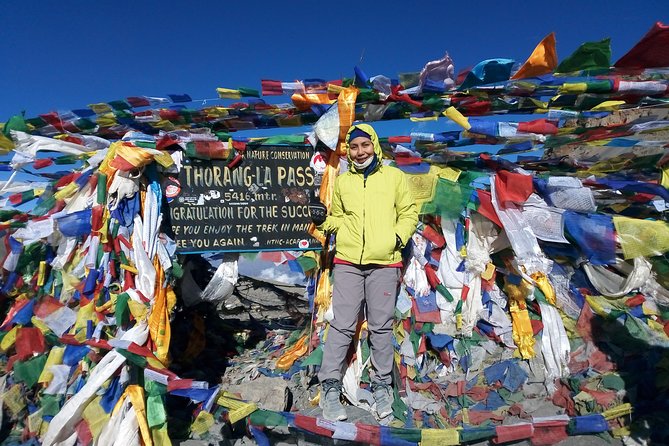
To trek the Annapurna Circuit, trekkers must obtain necessary permits and pay associated fees before embarking on the journey. Permit regulations dictate that trekkers need two main permits: the Annapurna Conservation Area Permit (ACAP) and the Trekkers’ Information Management System (TIMS) card. These permits aim to regulate trekking activities, promote conservation efforts, and ensure trekkers’ safety. The cost for these permits varies depending on the season and nationality of the trekker. Plus, engaging with the local communities along the trek is encouraged to enhance the overall experience. Interacting with locals not only provides a deeper cultural understanding but also supports the livelihoods of the people residing in the Annapurna region.
| Permit Type | Cost (in NPR) |
|---|---|
| Annapurna Conservation Area | 3,000 |
| Trekkers’ Information Management System | 1,000 |
Packing List Essentials
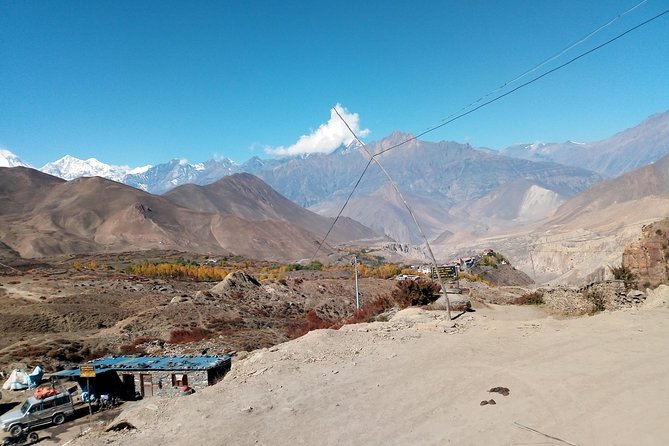
Packing smartly is crucial for a successful Annapurna Circuit trek, ensuring trekkers have the essentials for a comfortable and safe journey amidst the breathtaking Himalayan landscape. When preparing for this adventure, trekkers should consider the following:
-
Gear essentials:
- Quality hiking boots with good ankle support
- Lightweight, moisture-wicking clothing
- Sleeping bag suitable for cold weather
- Water purification tablets or a water filter
-
Weather conditions:
- Layered clothing for varying temperatures
- Waterproof jacket and pants
- Warm hat and gloves
- Sunglasses and sunscreen
Accommodation Options
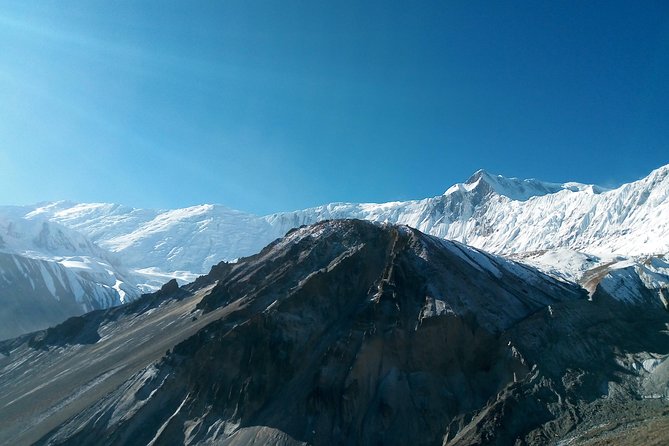
As trekkers embark on the Annapurna Circuit adventure, they’ll find a variety of accommodation options nestled amidst the stunning Himalayan scenery. Lodging choices along the route range from teahouses offering basic rooms to guesthouses with more amenities. These accommodations often provide breathtaking mountain views, allowing trekkers to relax and unwind in the midst of nature’s beauty.
For those seeking a more immersive experience, camping options are also available, allowing trekkers to spend nights under the starry sky in the heart of the mountains. Whether opting for a cozy teahouse room or a night spent camping surrounded by the serenity of the Himalayas, the accommodation types on the Annapurna Circuit cater to a range of preferences, ensuring a comfortable stay throughout the journey.
Meals and Dining
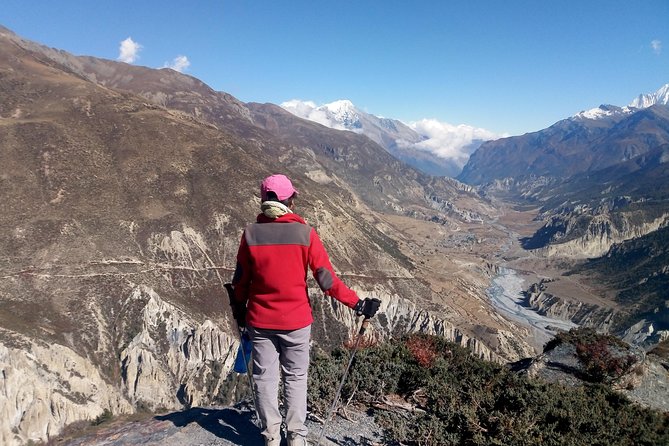
For trekkers on the Annapurna Circuit, meals and dining experiences aren’t just about sustenance but also serve as opportunities to savor local flavors amidst the breathtaking mountain backdrop. The culinary experiences along the trail offer a glimpse into the richness of Nepalese cuisine, with traditional dishes like dal bhat (rice and lentils), momos (dumplings), and thukpa (noodle soup) delighting the taste buds. Trekkers can enjoy freshly prepared meals in teahouses, where the warmth of the hearth adds to the dining ambiance.
Sampling the local cuisine provides insight into the culture and traditions of the region, creating memorable moments that go beyond just satisfying hunger.
- Cultural Immersion: Trying local dishes connects trekkers to Nepalese culture.
- Community Engagement: Dining in teahouses fosters interactions with locals.
- Nutritional Support: Meals provide essential energy for the challenging trek.
- Memorable Experiences: Culinary explorations enhance the overall trekking journey.
Acclimatization and Altitude Sickness
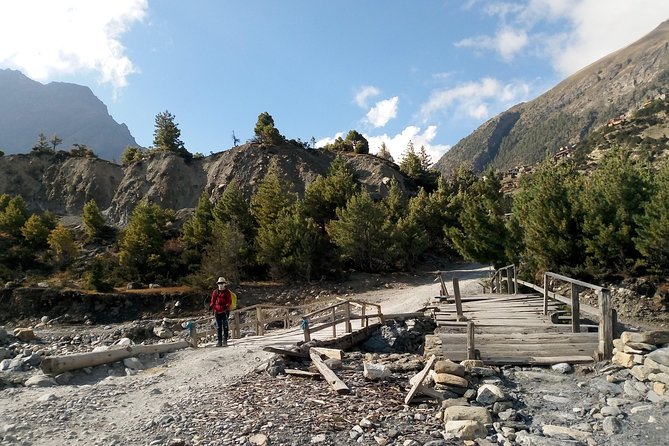
Ensuring proper acclimatization to high altitudes is crucial for trekkers embarking on the Annapurna Circuit to minimize the risk of altitude sickness and fully enjoy the trekking experience.
At high altitudes, oxygen levels decrease, making it challenging for the body to function optimally. Trekkers should ascend gradually, allowing their bodies time to adjust to the decreasing oxygen levels. Prevention strategies include staying hydrated, maintaining a steady pace, and taking rest days to acclimatize.
Symptoms of altitude sickness, such as headaches, nausea, and dizziness, should be carefully monitored. If symptoms worsen, descending to a lower altitude is crucial. Proper acclimatization and knowing how to manage symptoms are key factors in ensuring a safe and successful trekking experience in the Annapurna region.
Physical Fitness Preparation
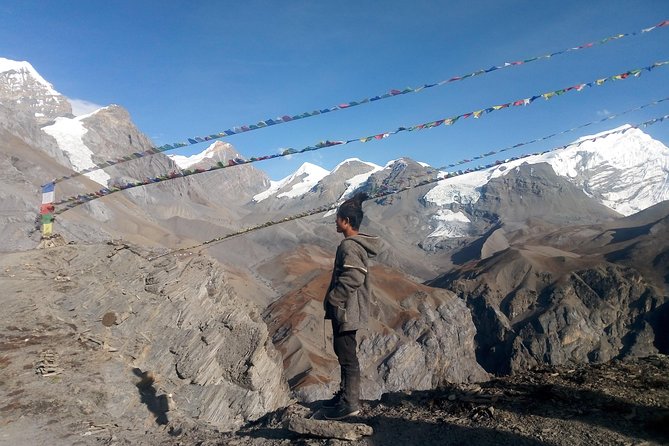
Proper physical fitness preparation plays a vital role in ensuring a successful and enjoyable Annapurna Circuit trekking experience.
-
Physical Training: Engage in regular cardiovascular exercises like hiking, running, or cycling to build endurance and stamina.
-
Strength Training: Incorporate bodyweight exercises or weight training to strengthen muscles, especially legs and core, essential for trekking.
-
Flexibility Exercises: Include yoga or stretching routines to improve flexibility, reducing the risk of injuries during the trek.
-
Equipment Preparation: Ensure proper fitting hiking boots, moisture-wicking clothing, a comfortable backpack, trekking poles, and a good quality sleeping bag to enhance comfort and safety on the trail.
Cultural Highlights Along the Trail
As trekkers traverse the Annapurna Circuit, they’re immersed in a rich tapestry of cultural highlights that offer insights into the local way of life and traditions. The trail is dotted with vibrant villages where trekkers can experience true culture by interacting with locals, observing traditional practices, and even participating in customary festivities.
Along the way, travelers encounter ancient monasteries, colorful prayer flags fluttering in the wind, and intricate Buddhist stupas that hold deep spiritual significance for the inhabitants of the region. The local traditions, from intricate handicrafts to authentic Nepalese cuisine, provide a glimpse into the unique heritage of the area.
These cultural encounters enhance the trekking experience, creating memorable moments that resonate with the essence of the Annapurna Circuit.
Safety Tips and Emergency Procedures
For trekkers embarking on the Annapurna Circuit, prioritizing safety through proactive measures and familiarity with emergency protocols is crucial for a successful and enjoyable journey. To ensure a safe trekking experience, here are some essential safety tips and emergency procedures to keep in mind:
-
Stay Hydrated: Proper hydration is key to prevent altitude sickness and maintain energy levels.
-
Pack Essentials: Carry a first aid kit, extra clothing layers, and emergency supplies like a flashlight and whistle.
-
Know Emergency Numbers: Familiarize yourself with local emergency contacts and the nearest medical facilities along the trail.
-
Buddy System: Trek with a partner or group, and regularly communicate your whereabouts to ensure assistance in case of emergencies.
Environmental Considerations
When trekking the Annapurna Circuit, trekkers must be mindful of their impact on the environment to preserve the natural beauty and ecosystem of the region. Proper waste management is crucial to maintain the pristine surroundings. Trekkers should carry out all their trash and dispose of it responsibly at designated areas.
Adopting eco-friendly practices such as using reusable water bottles, minimizing plastic usage, and avoiding littering can significantly reduce the ecological footprint. Plus, choosing teahouses and accommodations that follow sustainable practices can support the local community and environment.
Trek Last Words and Reflections
Upon reaching the end of the trek, trekkers are filled with a sense of accomplishment and nostalgia, reflecting on the challenging yet rewarding journey through the Annapurna Circuit.
-
Personal Growth: Trekking the Annapurna Circuit pushes individuals beyond their comfort zones, fostering personal growth and resilience.
-
Connection with Nature: The trek offers a profound connection with nature, allowing trekkers to appreciate the beauty and vastness of the Himalayan landscape.
-
Cultural Immersion: Interactions with local communities provide insight into the rich cultural heritage of the region, leaving lasting impressions on trekkers.
-
Memories and Bonds: Shared experiences on the trail create lasting memories and forge strong bonds among trekkers, fostering a sense of camaraderie that extends beyond the journey.
Common questions
Are There Any Specific Cultural Customs or Etiquette That Trekkers Should Be Aware of While on the Annapurna Circuit Trek?
When trekking, it’s vital for travelers to respect cultural customs and practice proper trekker etiquette. Understanding local traditions, dressing modestly, and greeting locals appropriately are key to fostering positive interactions and experiences along the journey.
What Types of Wildlife Can Be Encountered Along the Trail, and Are There Any Safety Precautions to Take?
When encountering wildlife on the trail, it’s crucial to take safety precautions. Enjoy photography opportunities and bird watching but maintain a safe distance. Always respect the animals’ habitats, avoid feeding them, and adhere to any guidelines provided by local authorities for a memorable experience.
Are There Any Opportunities for Cultural Exchanges With Local Communities or Interaction With Indigenous Peoples During the Trek?
Opportunities for cultural exchanges and indigenous interactions enrich the trekking experience. Engaging with local communities offers insight into traditions, lifestyles, and customs. These encounters foster mutual understanding and create memorable connections that enhance the journey.
How Are Emergency Situations Handled on the Annapurna Circuit Trek, and What Kind of Medical Facilities Are Available Along the Route?
In emergency situations on the trek, immediate response is crucial. Medical facilities along the route vary, often basic. Safety measures include wildlife encounter protocols. Trekking guides are trained to handle emergencies and provide necessary assistance efficiently.
Can Trekkers Expect to Have Access to Internet or Phone Service at Any Point During the Trek, or Should They Plan to Be Completely Disconnected From Communication?
Trekkers can anticipate limited connectivity options while exploring the vast terrain, suggesting they might experience a partial disconnection from communication during the journey. Planning to be largely offline could enhance the immersive experience.
Last Words
Embark on the adventure of a lifetime with the Annapurna Circuit trekking experience. From challenging trails to breathtaking vistas, this 12-day journey offers a unique blend of natural beauty and cultural exploration.
With a focus on active exploration and personalized tours, every step of the way is filled with excitement and wonder. Discover the allure of the Annapurna region as you learn about its majestic landscapes and vibrant culture.
Get set for an unforgettable trekking experience like no other.